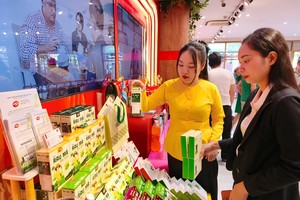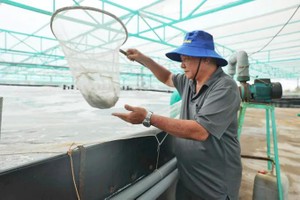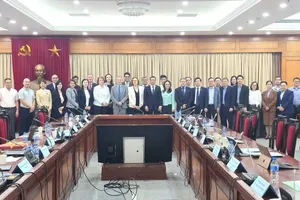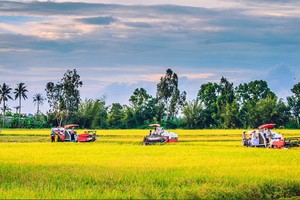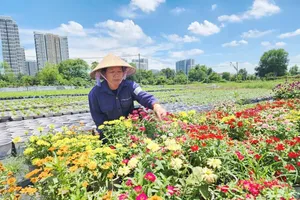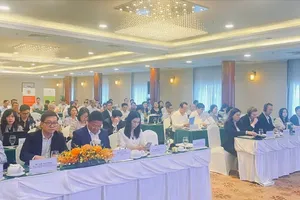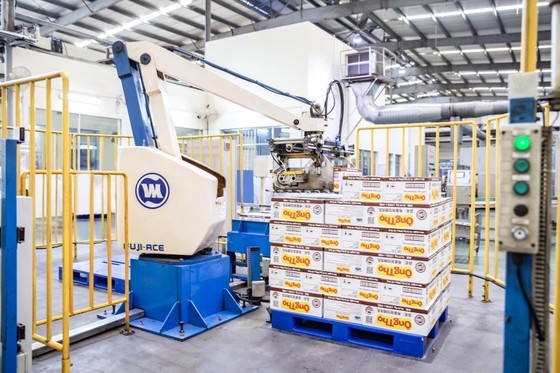 |
Automatic production stages at one Vinamilk factory |
Chairman Nguyen Ngoc Hoa of HCMC Businesses Association shared that in the first five months this year, many companies in the city, especially those in the fields of textiles, apparel and footwear, manufacturing, construction, materials, electricity – electronics, have been worried about the drop in their order quantity. Besides the general decline in global purchasing power, several companies cannot receive new orders because they have not met green production requirements. Meanwhile, those that are able to upgrade their manufacturing chains have enjoyed a surplus order number.
General Director of Tan Quang Minh Co. Nguyen Dang Hien informed that in 2022, thanks to going green in production, the company’s export turnover increased by more than 60 percent. Since the beginning of this year, besides accepting orders from the Republic of Korea, Japan, ASEAN countries, it has exported products to the US and China.
Similarly, General Director of Loc Troi Group Nguyen Duy Thuan reported that after cooperating with farmers in the Mekong Delta provinces of An Giang and Kien Giang for green agriculture on a surface area of 210,000ha of rice field, its product ‘Com – Rice Vietnam’ has witnessed a promising rise in the global market share, with the net profit of over VND412 billion (US$17.6 million). It is expected that the exported rice volume of the company can triple this year.
Green economy has been applied by FDI businesses right when they enter Vietnam. For instance, Director Ho Thi Uyen of the External Relations Department of Intel Products Vietnam shared that in the first established factory in Saigon Hi-tech Park in 2006, Intel installed a solar power system on all roofs of its office buildings. The company is now trying to fulfill the goal of zero greenhouse gas emission by 2040 as it is gradually transforming to the use of clean energy and reduce waste disposal during its manufacturing activities, along with recycling when possible.
At present, all six factories of Heineken Vietnam are using biomass energy to produce beer. There is no landfill waste discharged by them now, while all by-products are recycled for agricultural purposes. “Sharing the aim of the Vietnamese Government, Heineken is adopting its sustainable strategy of creating a balance between economic growth and environment protection. It is now seeking more renewable energy sources and applying circular economy models for its sustainable development”, said Holly Boskstock, Senior Foreign Affairs Director of Heineken Vietnam.
Obviously, there is no other choice for domestic companies but to move along with the trend and satisfy the green demands of the market.
However, Deputy General Director Nguyen Thi Lien of Phong Phu International Joint Stock Co. said that even though going green helped her business to gain $120 million in 2022, it was a real challenge for the organization to invest hundreds of billions of VND to upgrade its machinery and technologies. That is not to mention an annual fee of $600 per factory for all 30 units to use the Higg Index of the Sustainable Apparel Coalition (SAC) in order to maintain the green production capacity.
Not many companies are able to possess such strong financial potential like Vietnam Dairy Products JSC. to pour more than VND3 trillion ($128 million) to build three farms that meet ecological standards and operate with solar energy, along with a biogas system to recycle animals’ waste into fertilizer and gas to heat water or the soil cycle solution to protect the underground water and to establish organic pastures.
Therefore, it is critical that enterprises can receive timely support from related ministries in developing their plan for green economy models. This can be done via introducing various green credit sources with preferential interest rates and diversifying export markets for green products. The Government and local authorities should build green infrastructure (energy, logistics, waste collection and treatment) as soon as possible to help businesses to go green synchronously.




